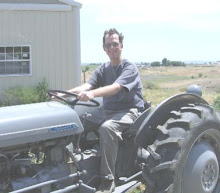LeGrand had another side business; he would ride his 1930s BMW to Detroit to pick up a school bus for the LA district. He'd put the BMW in the bus and drive the bus back to LA! As he told me, he was taken with the difference between the BMW and Harley ride; so he designed his own motorcycle, obtaining first one and then a second patent for his design.
Back in 1975 I visited LeGrand and he showed me two patents he'd received for his motorcycle ideas; the first being for a four cylinder motorcycle, and if memory serves (which it doesn't well these days), the second was for a torsion bar suspension system. I've found the first online (click here), but not the second.

LeGrand was quite taken with the pressed-steel techonolgy which was stamping out car parts, and thought this a great innovation to be applied to motorcycle construction. He went ahead and built two complete motorcycles with which to compete in field trials for a US Military contract during WWII. He had made arangements with Studebaker to produce the Jordan Four, if he received the contract. They had idle production capacity due to shifting production from automobiles to tanks. To hear LeGrand, the Jordan Four vastly outperformed the Harley, in particular driving through sand where the Harley got stuck. But LeGrand was "stuck" between a rock and a hard spot; he had the superior machine, but no production, and the military went where the military had been going, with Harley.
in the end, Harley got it's revenge on LeGrand. After a career on a Harley that started in the 20s and ended in the 50s with disability retirement; the years in the saddle had pounded his spine to the point where he couldn't ride anymore. LeGrand was very proud of his $7/month disability check from CHP (yes, that is seven dollars a month) which had no provision for cost of living and he still recieved till he passed away at 104 (again, that memory thing).
LeGrand had donated one of the two Jordan Fours, along with the early BMW, to Harrah's Auto Museum; but was aghast to discover a couple years later that they had sold them! When I visited, he still had the remaining one, which was painted a dull gold color. He also still had all the wooden casting blocks in which he'd sand-cast the magnesium cases and various parts to make the engine/trans/driveline. I'm grateful that someone has posted a couple pictures on the internet (link here) (the materials and pictures I have are somewhere boxed many moves back, and I haven't seen them for quite a while).
I don't know for sure which one this is, but it's my understanding that after LeGrand passed away, LeGrand's daughter made arrangements to have the remaining one displayed permanently at Peterson's museum in Los Angeles. Interestingly, the Matchless G50CSR which I almost obtained in Tucson in 1970 ended up there too. but that's another story.


As you can see from the pictures, LeGrand not only built the Jordan Four with a pressed steel frame, four cylinder engine, and torsion bar suspension, but he had LOTS of sheet metal. Even solid wheels. This thing was quite a sail in a cross-wind (he admitted, bad as a VW Bus!). One of the interesting design features of the Jordan Four is its overhead camshaft. there is a single vertical gear driven shaft in the center between the four cylinders. This shaft has only two lobes. There is a remarkable valve lifter design which translates this vertical rotational motion to the valve stems. LeGrand was very proud of this. It did however, mean that the firing order had to be circular, rather than the standard staggered. One other feature was that unlike the Ariel Square Four design, the crankshafts were parallel to travel direction and counter rotating, which meant no 90 degree power transfer to the drive shaft (as with the later Aerial), but no torque twist (as with BMW).
For his 50th wedding anniversary, LeGrand restored the Model A which he owned at marriage, surprising his beloved Margaret with a shiney gold Model A! That's just the sort of thing he did. One other quirky thing he did was to get in his 50s VW beetle and drive to Alaska (yes, from Malibu California) at nearly 100 years of age. When I asked him why he went to Alaska, he said "I was tired of looking at the same ladies where I eat breakfast, and wanted to see some new pretty faces!"
So there's a little bit more oral history to add to the Jordan Four, a most interesting production from a most interesting man.




No comments:
Post a Comment